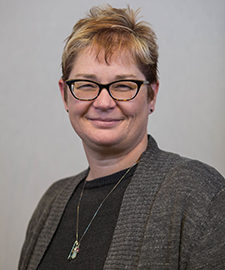A student disrupts class. An argument erupts in a household where family members have been isolated during the pandemic. A toddler in an early childhood education center cries loudly when it’s time to leave the playground.
Rather than dealing with these common flashpoints after they happen, a burgeoning area of expertise in behavioral and biomedical science aims to prevent them.
On several fronts, the Institute on Community Integration and partner organizations are combining positive behavior support (PBS) and person-centered thinking practices to increase families’ quality of life.
This month, for example, ICI staff members will share key insights at “The Expanding World of PBS: Science, Values, and Vision,” a virtual conference now in its 18th year.
Positive behavior support is a set of research-based strategies for increasing quality of life and decreasing interfering behavior. Instead of focusing on interventions for one person, the framework uses a continuum of proactive strategies to teach a range of skills, from de-escalating intense one-on-one situations to building good social relationships within an organization. This creates environments that are positive and predictable. They also work alongside person-centered planning techniques, which involve designing activities that are both tailored for and important to an individual.
As the PBS framework has grown in use by early childhood centers, schools, residential, employment, and other community settings, there is a tendency to focus on the most intense situations involving people with disabilities, said Jessica Simacek, manager of the ICI Telehealth Laboratory and a specialist in supporting children with developmental disabilities. This is a common misunderstanding about the framework, she said.
“In reality, it’s intended to be a model to support everybody in a given setting. On a universal level, that means creating a supportive environment for the staff, students, and families at a school, for example. We’re not stepping in to just stop an interfering behavior. We’re building a proactive, positive, data-based approach to improve the quality of life for everyone in that setting.”
At this month’s virtual conference, ICI’s Rachel Freeman, director of state initiatives and a leader in the area of PBS, will discuss ways to implement a three-tiered PBS model in home, community, and work settings. The tiers represent the range of behavior intervention and support, from creating a broad set of expectations for everyone in a given setting to more individualized responses to specific behaviors. She will also present some of the Institute’s work with the state of Maryland to create a technical assistance infrastructure for implementing PBS in organizations supporting people with IDD in residential and employment settings.
Eileen Klemm, program director for ICI’s Check & Connect dropout prevention program; former ICI Director David Johnson; and Nicole Duchelle, an ICI education program specialist, will also present the Institute’s work at the conference.
Check & Connect also is featured this month in a webinar series hosted by the National Center on Intensive Intervention and the Center on Positive Behavioral Interventions and Supports. The series focuses on supporting secondary students with intensive needs during the pandemic.
ICI also is part of a community of practice, the Minnesota Positive Behavior Support Network, which has been hosting a series of PBS forums for people across the lifespan. And under an award from the Minnesota Department of Human Services, ICI is creating a series of eight online training modules supporting providers of person-centered practices and PBS in home and community-based settings.
“One of our colleagues used an analogy recently of a fire station when talking about these strategies,” said Freeman. “We’re giving people tools and resources so they don’t have to be putting out fires all the time. Instead, we are preventing fires from occurring in the first place.”




